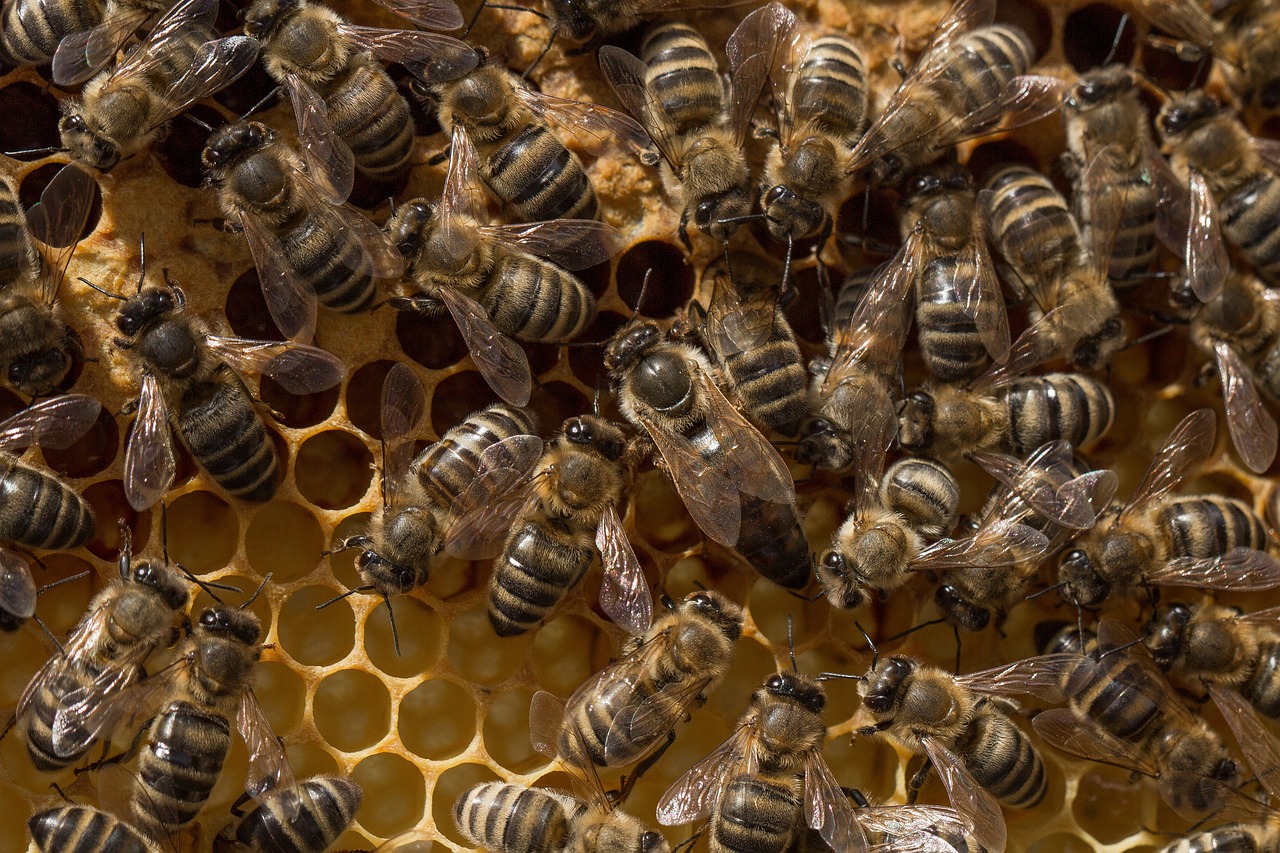There is some mystery around the life and purpose of the queen bee, and here we walk you through the birth, life, and Shakespearian death of a queen bee. The queen bee carries the greatest burden and is responsible for the hive's survival. The queen is the hive mother and must lay all the eggs that eventually become worker bees and drones. She resides in the hive and is waited on by worker bees who clean and feed her. Her existence in the hive is the reason for aggression; other bees will go to any length to protect her. However, the mystery is less about how important she is and more about how one becomes queen, what her life looks like as ruler of the hive, and how does her reign end?
The Birth of a New Queen Bee
Many do not know that the birth of a new queen bee is based on who becomes queen first. The queen bees share the same genes as female worker bees, and any female larva can potentially be a queen. However, it is the royal jelly diet that is fed only to potential queens that make her emerge as royalty.
When a honeybee hive senses the queen is ill or the hive is preparing to swarm, the honeybees begin the process of raising a new queen. Low levels of pheromones emitted from the queen in the hive will trigger this and indicate to other bees it is time to get ready. Nurse bees choose around 15 hatched female larvae and start to give them a royal jelly-only diet. This milky substance comes out of the tops of the bees' heads! Royal jelly has lots of good stuff for those being groomed into royalhood, like simple sugars, fatty acids, vitamins, minerals, and proteins that act as antibiotics for the promising queens.
The queens-to-be develop in a honeycomb resembling a peanut shape called a "queen cell." When the larva is about to metamorphose into a queen, the worker bees cover the cell as she transforms into her potential. When she is fully developed, she chews her way out with a bit of help from some worker bees.

Get help with your beehive or bee swarm removal! Call Today 760-224-3040 Or 951-265-8292!
The Life of the Queen Bee
After the queen exits her cell, she must, in true Shakespearean style, kill all her sisters who were also in the running to become queen. Using a high pitch chirp, the new queen will call to her sisters still in their cells, and they will answer back. Once she locates them, she stings them to death in the cell and gruesomely becomes the new queen. A life that begins with fighting and killing then turns to mating in flight with a male drone that will allow her to lay eggs for up to five years! After mating, the queen returns home to the hive, and if her queen mother is still there and close to the end of life, the new queen will kill her also. In swarming, the old queen is gone, so the new queen does not have to take any lives upon returning.
Once the new queen is the only potential royal in the hive, she begins laying eggs, and this defines the rest of her life. She has attendees and is cared for and protected, but her sole job is to lay eggs and keep the hive going. The queen drags her abdomen along the honeycomb and puts an egg in any unoccupied cells. She may lay thousands of eggs in the summer, taking only short breaks to eat and groom. The queen lets the other bees know she is alive and well by spreading her pheromones in the hive.
The Tragic Death of the Queen Bee
Queen bees typically live 3-5 years (yes, the exact time when she doesn’t have more eggs to lay). The queen bee will lay eggs until the end, but she waits for her demise as new queens are being raised. The new queen becomes the old queen, and she will experience her death as she delivered her mother’s – tragic!
As she reaches the end of her short life, her pheromones weaken and trigger the process again. However, if she is an excellent and fertile queen, she will lay more eggs than there is room in the hive, which will cause a swarm to find a new location, and the process of finding a new queen begins again in the existing hive. Although the process seems dramatic and can be hard to watch, it ensures the colony's survival.
If you have a bee concern or encounter a swarm or hive and need help, please do not hesitate to contact a local beekeeper. In Orange County, Los Angeles, and San Diego counties, D-Tek Bee Removal Services is hands down the best comprehensive live bee removal service available.
